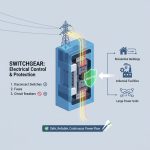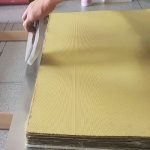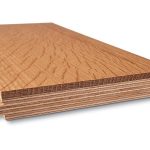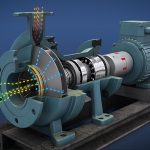Introduction
The automotive industry is undergoing a transformation with the rise of new materials that promote both performance and sustainability. Among the most significant contributors to this change is polypropylene (PP) compounds. Polypropylene compounds are revolutionizing automotive manufacturing by providing lightweight, durable, and sustainable materials for a wide range of automotive applications. As car manufacturers aim to reduce fuel consumption, improve efficiency, and meet regulatory requirements, polypropylene compounds have emerged as a versatile solution that aligns with the growing demand for sustainable manufacturing practices.
Order a sample PDF of the Polypropylene Compounds Market Intelligence Study, published by Vantage Market Research.
What are Polypropylene Compounds?
Polypropylene (PP) is a thermoplastic polymer widely used in automotive manufacturing. When enhanced with various additives, such as fillers, reinforcements, and impact modifiers, it becomes polypropylene compound. These compounds exhibit improved mechanical properties, making them suitable for a wide array of automotive applications.
Key characteristics of polypropylene compounds include:
- Lightweight: Polypropylene is inherently lighter than other materials like steel and aluminum, making it ideal for reducing the overall weight of vehicles.
- High Chemical Resistance: Polypropylene compounds resist chemicals and solvents, ensuring durability even in harsh automotive environments.
- Cost-Effectiveness: The manufacturing process for polypropylene compounds is cost-efficient, making them an affordable option for automotive production.
- Recyclability: Polypropylene is recyclable, which supports the automotive industry’s sustainability goals.
Polypropylene Compounds: A Game Changer in Lightweight Automotive Design
One of the primary advantages of polypropylene compounds in automotive manufacturing is their ability to significantly reduce vehicle weight. As automakers strive to meet increasingly stringent fuel efficiency standards and reduce CO2 emissions, lightweight materials have become essential.
Polypropylene compounds help reduce weight without sacrificing strength or performance. In fact, replacing metal parts with polypropylene compounds can lead to a reduction in weight by up to 10-20% depending on the component and vehicle type. This weight reduction has direct benefits for automotive performance, including:
- Improved Fuel Efficiency: Lighter vehicles require less energy to move, leading to improved fuel efficiency and lower carbon emissions.
- Enhanced Handling and Performance: Reduced weight results in better vehicle dynamics, including improved acceleration, braking, and overall handling.
- Lower Environmental Impact: The use of lighter materials reduces the environmental footprint of vehicle manufacturing by lowering energy consumption and material waste.
In automotive applications, polypropylene compounds are used for exterior and interior components, such as bumpers, dashboards, door panels, and even engine parts. Their ability to be molded into complex shapes also allows for greater design flexibility, enabling automakers to create aesthetically appealing yet functional parts.
Sustainability in the Automotive Industry: Polypropylene as a Green Solution
Sustainability is a key priority in the automotive sector, especially as governments and regulatory bodies impose stricter environmental regulations. Automakers are under pressure to adopt green manufacturing practices and reduce the carbon footprint of their products. Polypropylene compounds are emerging as a leading sustainable solution due to their environmental advantages.
- Recyclability: Polypropylene is one of the most widely recycled thermoplastic polymers. Approximately 90% of polypropylene parts in vehicles are recyclable, which helps reduce waste and supports the circular economy. Recycling polypropylene compounds reduces the need for virgin material production, saving energy and minimizing environmental impact.
- Reduced Carbon Footprint: The production of polypropylene compounds consumes less energy compared to metals like steel and aluminum. Moreover, as lighter vehicles lead to better fuel efficiency, the reduction in overall CO2 emissions is significant throughout the vehicle’s lifecycle.
- Bio-Based Polypropylene: To further enhance sustainability, many manufacturers are exploring bio-based polypropylene compounds made from renewable sources, such as plant-based materials. These innovations are helping reduce the carbon footprint of polypropylene and contribute to the automotive industry’s shift toward renewable and sustainable materials.
Applications of Polypropylene Compounds in Automotive Manufacturing
Polypropylene compounds are used in a wide range of automotive components, each offering unique advantages in terms of weight, performance, and sustainability. Some of the key applications include:
Exterior Components:
Polypropylene compounds are used in the production of bumpers, grilles, and exterior trim. The lightweight nature of these materials reduces the weight of the vehicle while maintaining durability and impact resistance.
Interior Parts:
Polypropylene compounds are also utilized for interior automotive components, such as dashboards, door panels, and seat frames. The material’s ability to be molded into complex shapes allows for innovative designs and enhances the aesthetic appeal of the vehicle’s interior.
Engine Components:
Polypropylene compounds are gaining traction in the production of engine components, such as intake manifolds and air ducts. These components benefit from the material’s chemical resistance, durability, and ability to withstand high temperatures.
Battery Casings:
With the rise of electric vehicles (EVs), polypropylene compounds are used for lightweight battery casings. This application benefits from the material’s resistance to chemicals and its ability to provide a protective shell for the battery.
Insulation Materials:
Polypropylene compounds are also employed in vehicle insulation materials due to their excellent soundproofing qualities. This improves the overall comfort of the vehicle by reducing noise levels from the engine and road.
Innovations in Polypropylene Compounds for Automotive Manufacturing
As the automotive industry continues to evolve, so does the demand for advanced polypropylene compound technologies. Innovations in this area are driven by the need for better performance, greater sustainability, and reduced manufacturing costs. Some notable innovations include:
Enhanced Mechanical Properties:
New formulations of polypropylene compounds are being developed with enhanced mechanical properties, such as improved tensile strength, impact resistance, and flexibility. This allows polypropylene to replace metals in even more demanding automotive applications.
Nanocomposites:
Nanotechnology is being integrated into polypropylene compounds to create nanocomposites that offer even greater strength and durability. These nanocomposites can be used in high-performance automotive components that require superior mechanical properties and thermal stability.
Polypropylene Blends:
To enhance the properties of polypropylene, manufacturers are experimenting with various blends. For example, blends with glass fibers or elastomers improve the strength and elasticity of the material, making it suitable for a broader range of automotive applications.
Self-Healing Polypropylene Compounds:
An emerging innovation in the polypropylene compound space is the development of self-healing materials. These compounds can automatically repair small cracks or damage, leading to longer-lasting and more durable automotive components.
Regional Dynamics: Asia-Pacific and the Global Polypropylene Compounds Market
Asia-Pacific is the largest market for polypropylene compounds, driven by rapid industrialization, the booming automotive industry, and increasing consumer demand for affordable and fuel-efficient vehicles. Countries such as China, Japan, and India are major producers and consumers of polypropylene compounds, with the automotive sector being one of the key growth drivers.
In China, the government’s push toward sustainable manufacturing practices and the development of electric vehicles has significantly increased the demand for polypropylene compounds. The Chinese automotive industry is expected to continue growing, fueling demand for lightweight materials that contribute to energy efficiency.
In Europe and North America, automotive manufacturers are also prioritizing the use of polypropylene compounds to meet fuel efficiency and sustainability targets. The growing popularity of electric vehicles in these regions is expected to boost demand for lightweight materials, particularly in battery casings and interior components.
Challenges and Future Outlook
Despite the many advantages of polypropylene compounds, there are several challenges that need to be addressed in order to maximize their potential in automotive manufacturing.
- Cost Competitiveness: While polypropylene is generally more affordable than metals, the cost of producing advanced polypropylene compounds with enhanced properties can be high. However, ongoing research and development are helping drive down costs and improve the affordability of these materials.
- Recycling Infrastructure: The full potential of polypropylene compounds as a sustainable material depends on the development of robust recycling infrastructure. Many automotive manufacturers are working closely with recycling companies to improve the efficiency of polypropylene recycling processes.
- Technological Advancements: As new technologies such as self-healing materials and nanocomposites continue to evolve, there is a need for continued investment in R&D to improve the performance and sustainability of polypropylene compounds.
Gather more insights about the market drivers, restrains and growth of the Global Polypropylene Compounds Market
Conclusion
Polypropylene compounds are at the forefront of revolutionizing the automotive industry by offering lightweight, durable, and sustainable solutions for a wide range of applications. As automakers face increasing pressure to reduce emissions, enhance performance, and meet consumer demand for sustainable vehicles, polypropylene compounds are proving to be a game-changer.
The ongoing innovations in polypropylene compound technology, coupled with their ability to meet the stringent requirements of modern automotive manufacturing, will continue to drive growth in this sector. As we approach 2030, polypropylene compounds will remain a crucial material in the evolution of the automotive industry, helping to shape a greener, more efficient future for transportation worldwide.
By incorporating these compounds into their designs, manufacturers can reduce vehicle weight, improve fuel efficiency, and enhance vehicle performance while supporting sustainability goals. As the demand for eco-friendly and high-performance automotive materials grows, polypropylene compounds will continue to be a driving force behind automotive innovation and sustainability.
Examine the comprehensive Polypropylene Compounds Market study by Vantage Market Research for a thorough examination of industry projections, major players, and geographical trends.
![[Market Research Reports] – Research Google News Blog | VMR.Biz](https://www.vmr.biz/wp-content/uploads/2022/12/logo-removebg-preview.png)











